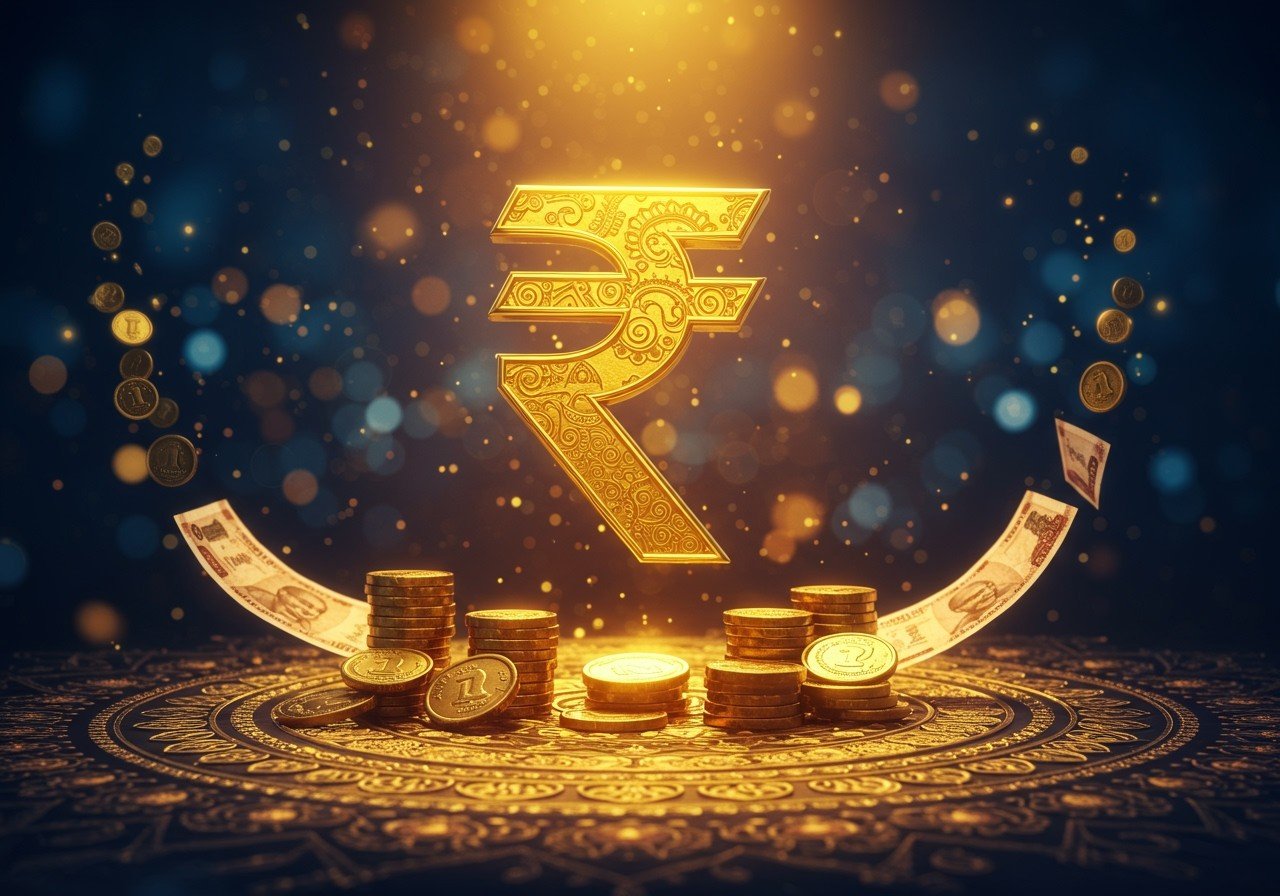
The Indian Rupee Sign (₹) is much more than a simple currency symbol; it embodies India’s economic identity and rich cultural heritage. Introduced in 2010, this symbol carries the weight of India’s history and its aspirations for the future. Let’s delve into the significance of the Indian Rupee Sign, its adoption, and its impact on the global economic landscape.
History of the Rupee Symbol
The Indian currency boasts a rich history, with the term “Rupee” originating from the Sanskrit word “Rupya,” meaning “wrought silver” or “a silver coin.” Over centuries, various representations were used, such as “Rs” and “Re.” With India’s economic expansion, a unique symbol became essential for international recognition, leading to extensive discussions and the eventual creation of the distinct Rupee sign.
Designer of the Indian Rupee Sign
D. Udaya Kumar, a postgraduate design student at IIT Bombay, is the creative force behind the Indian Rupee Sign. His design ingeniously merges the Devanagari letter “र” (ra) and the Latin capital “R” (without the vertical stroke), symbolizing India’s blend of tradition and modernity. The two parallel horizontal lines at the top represent the Indian tricolor flag and simultaneously form an equality sign, signifying the nation’s commitment to economic equality. A rigorous selection process, including a public competition and government evaluation, ensured the chosen symbol resonated with India’s cultural and economic aspirations.
Adoption of the Indian Rupee Sign
On July 15, 2010, the Indian government officially adopted the Rupee Sign, marking a significant milestone. The Unicode Consortium assigned a unique code to the symbol, enabling its use across digital and print media. Integrating the symbol into keyboards and software facilitated seamless usage across various platforms, both within India and globally, from e-commerce to online banking.
Meaning and Significance
The Indian Rupee Sign transcends its function as a mere currency marker; it embodies India’s cultural heritage and economic aspirations. The Devanagari script acknowledges India’s traditional roots, while the Latin letter signifies its global presence. The design represents India’s unity in diversity, with the tricolor flag reinforcing national pride. Globally, the Rupee sign enhances India’s economic identity, placing it prominently among world currencies.
Want to create a sacred space for your finances? Explore our range of pure brass Lakshmi-Ganesh murtis at Poojn.in.
Usage of the Indian Rupee Sign
The Indian Rupee Sign is now widely used in financial transactions, academic publications, and digital platforms, enhancing its global visibility and acceptance. Its presence in accounting and financial reporting signifies professionalism and accuracy. Indian businesses leverage the symbol for branding and marketing, projecting authenticity and national pride on the international stage.
For those seeking to enhance their spiritual practices related to prosperity, Poojn.in offers a curated selection of items. Discover our collection of traditional puja items, including Lakshmi yantras and more, designed to enrich your rituals.
Conclusion
The Indian Rupee Sign elegantly blends tradition and modernity, symbolizing India’s rich heritage and future ambitions. From its thoughtful design to its widespread use, it narrates India’s economic and cultural journey. Whether on your keyboard or a financial report, the Rupee Sign signifies India’s unity, diversity, and global economic presence.
FAQs
What does the Indian Rupee sign symbolize? The symbol represents India’s blend of traditional and modern elements, reflecting its cultural heritage and economic aspirations. It incorporates the Devanagari script and the Latin letter “R,” symbolizing India’s connection to its roots and its global outlook.
Who designed the Indian Rupee sign? D. Udaya Kumar, a postgraduate student at IIT Bombay, designed the symbol. His design was chosen through a competition and officially adopted by the Indian government.
When was the Indian Rupee sign adopted? The Indian government officially adopted the Rupee sign on July 15, 2010. This marked a significant step in giving the Indian currency a distinct visual identity.
Delve deeper into the symbolism of Indian culture with our blog posts on Rudraksha and Tulsi and Yantras and Yagyas. These articles provide valuable insights into sacred Hindu symbols and rituals.


